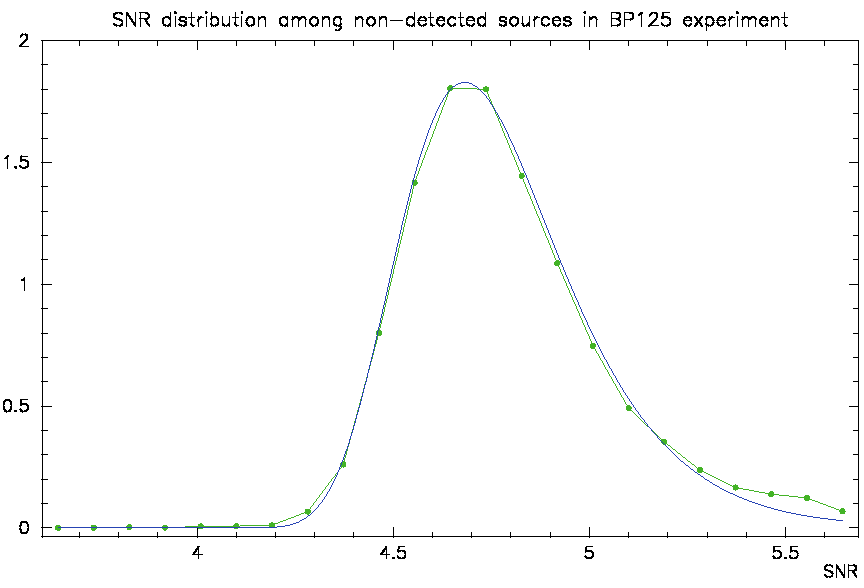Last update: 2010.06.16_17:34:17
In October-November 2005, VERA is observing a list of 3000 potential candidates for fringe searching at K-band. Any source with a detectable fringes will then be followed up by the proposed VLBA observations.
The results from the above observations were published (Beasley et al, 2002; Fomalont et al, 2003, Petrov et al, 2005a, Petrov et al, 2005b, Kovalev et al, in preparation) and were made available on the Web at http://magnolia.nrao.edu/vlba_calib/index.html and http://astrogeo.org/calib/search.html. In the web sites, all sources within a specified distance from a selected target position can be found, images, u-v plots and coordinates for each potential calibrator can be scrutinized.
A small subset of VCS sources, 374 objects, was re-observed at
K-band in 2002--2004 for future support of space navigation, proposals
BR076, BL115, BL122, Jacobs et al, 2003. Among 252 detected objects,
14 are are within |b| < 5o. These observations
showed that
VLBA phase-referencing observations at high frequency of galactic objects is also a significant part of its proposal load. Often, the limitation above 15 GHz for image quality and positional accuracy is caused by the loss of coherence in the image because of the relative large distance of the calibrator from the target. Thus, the new list of calibrators in the Galactic plane will significantly expand the list of VERA target sources and will improve the phase-referencing VLBA projects studying weak galactic objects.
We, thus, request three 24 hour observing sessions with the VLBA to observe about 500 candidates sources from the VERA fringe-search in the zone declination > -40o, |b| < 5o as well as within 10o from the Galactic center. We will use eight IF channels, spanned over 500 MHz around 24 GHz, with a total bandwidth of 64 MHz at 2 bit sampling, 256 Mb/s in order to reach the maximal sensitivity to reach the approximate VERA sensitivity. We the following correlator setup: 16 spectral channels in each IF and integration time 0.131 sec. This will give us an extra-wide search window needed for fringing sources with poorly known a priori positions. The calibration and imaging will be made in Charlottesville and Green Bank by using packages AIPS and difmap. Positions will be determined with Calc/Solve at GSFC.
The observation plan will be similar to the previous VCS schemes. Each source will be observed in two scans in different hour angles for 150 seconds. Every 1.5 hours, three to four troposphere calibrators will be observed. These calibrators are selected from the list of sources from the 2 cm VLBA survey (Kovalev et al., 2005), which are brighter than 0.5 Jy and have compactness index greater than 0.5 at 15 GHz. During a burst of tropospheric calibrator observations, the sources are selected in such a way that each antenna would observe at least one source at elevation below 20o and at least one source at elevation 50o above the horizon. Results of the VLBA Calibrator survey showed that observing tropospheric calibrators and estimation of troposphere path delay in zenith direction together with other parameters reduces the contribution of the unaccounted tropospheric path delay to less than 0.5 mas.
| Observed | Detected | Not detected | |
| Target | 492 | 327 | 165 |
| Trop. cal. | 51 | 51 | 0 |
| Total | 543 | 378 | 165 |
Detection rate: 66% targets. Sources with less than 3 detections are not counted.
 Probability of false detection as a function of SNR in BP125:
Probability of false detection as a function of SNR in BP125:
| PFD | SNR |
| 0.3 | 4.95 |
| 0.1 | 5.18 |
| 0.01 | 5.61 |
| 0.001 | 5.99 |
| 10-5 | 6.70 |
2006.06.11_14:16 — 2006.06.12_14:18 :
The second session BP125B was observed.
Observation logs are
here.
2006.01.06: — The Programme Committee approved for dynamic scheduling, high priority.
2005.09.30: — Proposal was submitted to the Programme Committee. The code assigned: BP125
Key files:
| bp125a.key | bp125a.sum | |
| bp125b.key | bp125b.sum | |
| bp125c.key | bp125c.sum |
Summary: the number of sources observed: 2462, The number of sources reliably detected: 397, marginally detected: 158. Among them, the number of new sources reliably detected: 103, the number of new sources marginally detected: 122. All new detected sources will be observed in GaPS.
This page was prepared by Leonid Petrov
(![]() )
)
Last update: 2010.06.16_17:34:17